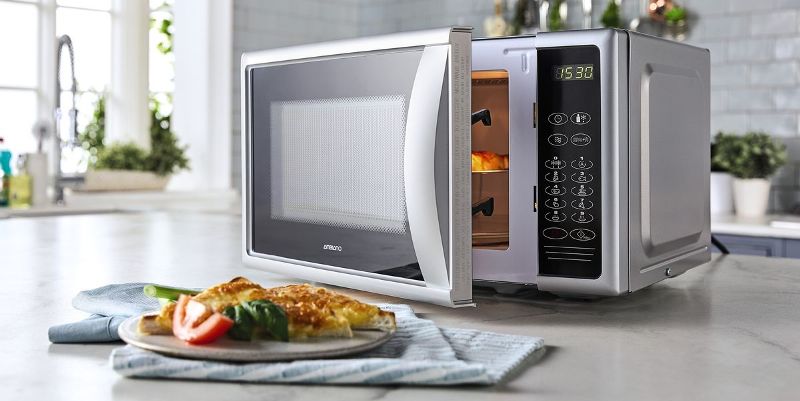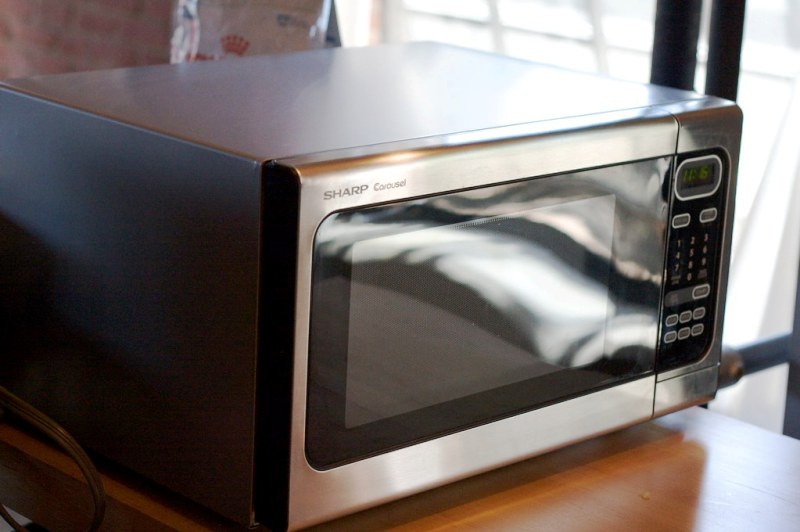
Contents
– Cooking well with your microwave
– Which dishes to use in the microwave?
– Extending the life of your microwave
Because mastering your household appliances also means preserving their longevity by using them wisely, we have reviewed the main rules for using a microwave properly.
How to cook with a microwave, which dishes to use, and the maintenance tips: we tell you everything in this post.
Cooking well with your microwave
The microwave is a very particular tool for cooking, and it is necessary to know how to cook with it to use it well. However, to master it, you have to start by understanding how it works.
A reminder of the principle of the microwave
Unlike cooking by conduction, like a gas oven that heats the pan and then what it contains, the microwave only acts on the food molecules. Indeed, the waves act on the water molecules and agitate them to create heat. As a result :
– Food with no or insufficient water cannot or will not heat up sufficiently.
– Therefore, it is necessary to add water to foods that do not have water: to melt chocolate, for example.
Please note: do not add too much water; otherwise, the waves will only act on the water mass.
Also, since the microwave acts on the water particles but evaporates at 100°C, the microwave is useless for dishes requiring a higher temperature. This is also the reason why food does not brown in the microwave.
Foods that you cannot cook in the microwave
You cannot cook in the microwave:
– eggs or shellfish in the shell: shells may explode under the pressure of the steam created by the agitation of the water particles;
– too large pieces of meat such as poultry: to cook evenly and thoroughly, they require a much higher cooking temperature;
– Bacon, whether sliced or not: the excessive amount of salt in this food prevents it from cooking, and you will only obtain a dry slice;
– Frying: it is impossible to fry in the microwave because the temperature of the oil would be uncontrollable.
Which dishes to use in the microwave?

Dishes allowed in the microwave
You can’t use just any dish in a microwave either. Thus, unless otherwise specified by the manufacturer, the microwave (in microwave mode if you have a combination version) can only work with dishes:
– ceramic;
– porcelain;
– glassware;
– plastic dishes designed for this purpose (except in grill mode for appliances equipped with them!).
Dishes that are forbidden in the microwave
– Dishes and utensils made of steel, such as aluminum or stainless steel, must not be used in the microwave for several reasons explained further below.
◦ The metal reacts to the waves, creating electrical discharges and sparks that can damage the motor of your microwave (the magneton).
◦ Metal doesn’t let waves pass through either: even if there is no discharge, your food won’t cook.
◦ For the same reasons, it is recommended to reserve porcelain without gilding for the microwave.
– Finally, wood, stoneware, or terracotta are porous materials likely to get damaged or deformed during cooking. It will help if you avoid using them in the microwave.
Extending the life of your microwave
Using your microwave properly means taking care of it to ensure its longevity. A few good habits are enough to guarantee a good condition and avoid inconveniences:
– Protect your microwave from splashes with the cooking bell or a plastic film provided for this purpose. This will prevent splashes, especially if you have a combination microwave: they can reach the bottom behind the rotating heat grid, in which case the intervention of a specialist is necessary.
– Lower the power of your microwave and extend the cooking time; this evens out the temperature, requires less effort from your appliance, and reduces the risk of splashes.
– As soon as necessary, change the bulb or the mica plate (which channels the waves), which must be cleaned of encrusted food to avoid damaging the appliance.
Do you have information to share on which microwave to buy? Please, leave your comments in the section below.
